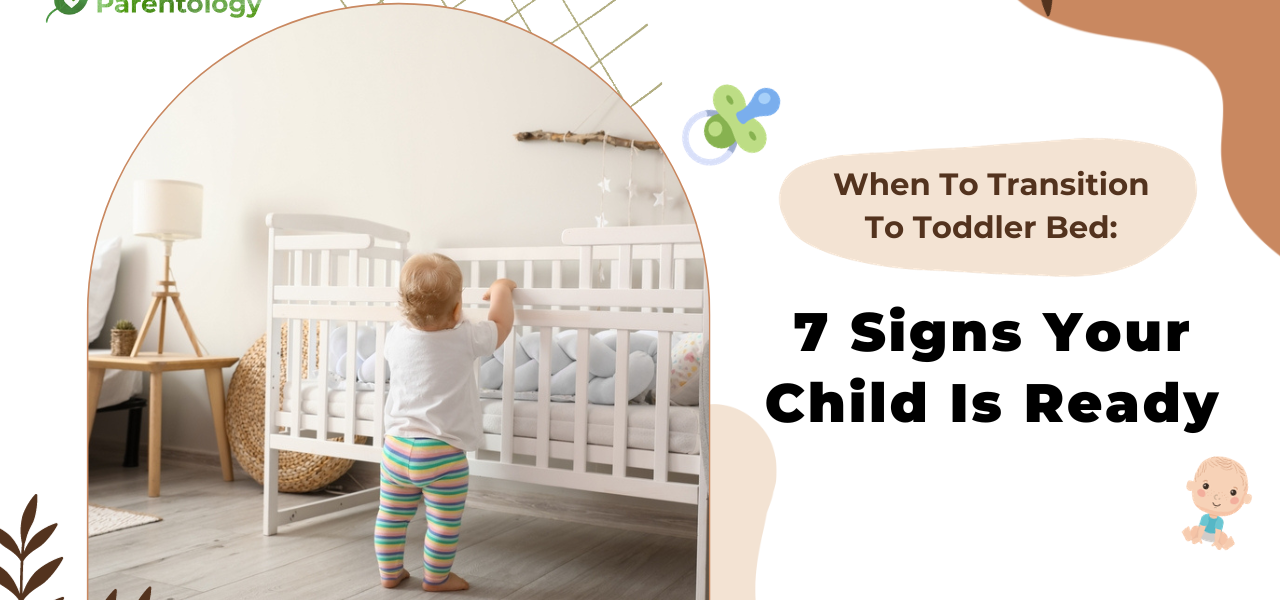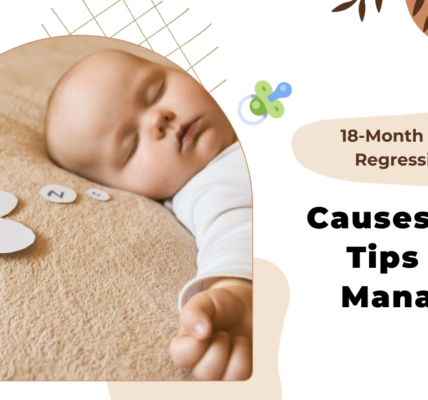Transitioning from a crib to a toddler bed marks an important milestone in your child’s growth. Identifying the right time for this transition is crucial for their safety and comfort. Understanding when to transition to toddler bed signs which indicating your child’s readiness is essential for a smooth transition.
Signs Indicating the Right Time to Transition
1. Age Milestones
Optimal Age Range: While there’s no fixed age for transitioning, typically between 18 months to 3 years is considered ideal. Each child’s readiness varies, so focus on developmental cues rather than a specific age.
2. Climbing Out of the Crib
Safety Concerns: If your child begins climbing out of the crib, it’s a significant safety hazard. Transitioning to a toddler bed prevents potential injuries from falls.
3. Crib Discomfort or Protests
Restlessness: If your child seems uncomfortable or protests being confined in the crib, it might signal a readiness for a more spacious sleeping arrangement.
4. Potty Training Progress
Independence: Progress in potty training signifies increasing independence. Transitioning to a toddler bed allows easier access to the restroom, supporting their newfound autonomy.
5. Verbal Expression of Interest
Communicating Preferences: Expressions like “big bed” or showing interest in siblings’ beds indicate a desire for change, often signaling readiness.
6. Physical Size and Growth
Space Constraints: When your child outgrows the crib in terms of height or length, it’s time to consider a larger sleeping space to ensure comfort.
7. Parental Comfort Level
Parental Readiness: Parents’ readiness for the transition is equally crucial. Ensure you’re mentally prepared for the change as it can affect your child’s adjustment.
Transitioning Tips and Strategies
Preparing Your Child
- Gradual Transition: Introduce the new bed gradually by allowing your child to spend playtime or storytime in it before transitioning to sleep.
Bedroom Safety Measures
- Safety Gates: Install safety gates to prevent wandering during the transition phase, ensuring a safe sleep environment.
Consistency and Patience
Consistent Routine: Maintain bedtime routines to provide a sense of security and predictability during the transition period.
Transitioning Tips for a Smooth Shift
Comfortable Environment
- Familiarity: Incorporate familiar elements like bedding or stuffed toys from the crib to provide a sense of comfort in the new bed.
- Reassurance: Offer reassurance and praise during the transition, emphasizing the positive change.
Gradual Transitioning
- Daytime Trials: Encourage daytime play or reading sessions in the new bed to familiarize your child with the space before nighttime.
Positive Reinforcement
- Praise and Encouragement: Acknowledge your child’s cooperation and positive behavior during the transition to boost their confidence.
Establishing Bedtime Routines
Consistent Bedtime Schedule
- Routine Reinforcement: Stick to a consistent bedtime schedule to maintain familiarity and provide a sense of security.
Calming Activities
- Relaxing Activities: Incorporate calming activities before bedtime, such as reading a book or practicing deep breathing exercises.
Creating a Sleep-Conducive Atmosphere
- Dim Lighting: Dim the lights to create a relaxing ambiance that signals the start of bedtime.
- Comfortable Temperature: Ensure the room temperature is conducive to comfortable sleep.
Importance of Consistent Bedtime Routines
Wind-Down Activities
- Calming Rituals: Engage in soothing activities like a warm bath or gentle massage to relax your child before bedtime.
- Storytelling: Reading a bedtime story helps establish a relaxing routine and encourages a sense of security.
Positive Associations
- Positive Environment: Create a positive association with the new bed by praising your child’s efforts during the transition.
- Comfort Items: Encourage your child to bring a favorite stuffed animal or blanket to the new bed for added comfort.
Safety Considerations for Toddler Beds
Safe Sleep Environment
- Firm Mattress: Ensure the mattress is firm and fits snugly into the bed frame to prevent entrapment or suffocation risks.
- Bed Height: Opt for a bed height that allows easy access for your child but reduces the risk of falls.
Bed Rail Safety
- Sturdy Rails: If using bed rails, ensure they are securely attached and provide adequate protection from falls.
- Proper Installation: Follow manufacturer instructions for proper installation and regularly check for stability.
The Role of Parental Guidance
Emotional Support
- Encouragement: Offer words of encouragement and praise to boost your child’s confidence during this transition.
- Emotional Support: Address any anxieties or fears your child may have about the new sleeping arrangement.
Setting Clear Boundaries
- Consistency: Reinforce boundaries, such as staying in bed during bedtime, to establish a sense of structure.
Communication and Reassurance
- Open Dialogue: Encourage open communication, allowing your child to express any concerns or fears about the transition.
- Reassurance: Assure your child that the new bed is safe and comfortable, fostering a positive attitude towards the change.
Maintaining Consistency and Patience
Bedtime Routine Consistency
- Routine Reinforcement: Stick to consistent bedtime routines to provide a sense of predictability and security.
- Adapting to Changes: Be flexible in adjusting routines if needed, accommodating your child’s comfort during the transition phase.
Patience During Adjustments
- Adjustment Period: Understand that some disruptions or resistance to change are normal. Patience is key in supporting your child through this adjustment period.
Addressing Common Concerns
Fear of the Dark
- Night Lights: Consider using a night light to alleviate fear of the dark, creating a comforting environment for your child.
Wandering and Safety Measures
Safety Precautions: Use safety gates or door knob covers to prevent wandering during the night while your child adjusts to the new bed.
FAQs About Transitioning to Toddler Bed
Q 1: Is there a specific age to transition to a toddler bed?
Ans 1: While most children transition between 2 to 3 years, readiness signs should guide the transition rather than a specific age.
Q 2: Should I wait until my child asks for a toddler bed?
Ans 2: While expressing interest is a sign, it’s not necessary for a child to ask for a bed. Pay attention to other readiness cues.
Q 3: What if my child is climbing out of the crib?
Ans 3: Climbing out of the crib poses a safety hazard, necessitating a transition to a toddler bed.
Q 4: Can transitioning disrupt my child’s sleep?
Ans 4: Transitioning may cause temporary disruptions, but consistency and reassurance help in adapting to the new bed.
Q 5: Should I use bed rails on a toddler bed?
Ans 5: Bed rails can offer additional safety, preventing falls, especially in the early stages of transitioning.
Q 6: How can I make the transition smoother for my child?
Ans 6: Involving your child in selecting their new bed and maintaining bedtime routines can ease the transition process.
Q 7: What if my child refuses to sleep in a toddler bed?
Ans 7: Patience is key. Offer reassurance and consistency to help your child adjust to the change.
Q 8: Can I transition straight to a regular bed?
Ans 8: A toddler bed provides a gradual transition, but if your child is ready, transitioning directly to a regular bed is an option.
Q 9: Should I remove the crib immediately after transitioning?
Ans 9: Consider keeping the crib in the room for a while as a familiar comfort until your child fully adjusts to the toddler bed.
Q 10: Can I transition my child if they co-sleep with me?
Ans 10: Transitioning from co-sleeping to a toddler bed requires patience and consistent bedtime routines for a smooth transition.
Conclusion: Navigating the Transition with Support
Transitioning to a toddler bed signifies an important step in your child’s growth and independence. Providing parental guidance, maintaining consistency in routines, and addressing common concerns with patience and reassurance are crucial for a successful transition. Embrace this phase as an opportunity for growth and learning, supporting your child’s journey into a new sleeping space with understanding and support.
For more guidance and expert advice on transitioning to a toddler bed, explore additional resources at Parentology.co.





